Main Guns: The Sherman Mounted Six Different Guns, But Not On All Versions,
The Sherman tank and its chassis was host to a variety of guns. Most had the M3 75mm gun, or the M1A1 76mm gun, but many were also equipped with the British 17 pounder, the M3 90mm, 3-inch AT gun, and the M2/M4 105mm howitzer. I will cover each below.
The M3 75mm gun: When it first saw combat, it was a great tank Gun
The M3 75mm gun was a great tank gun for the time the Sherman was first introduced to combat and was based on a well-liked WWI French field gun. When it first saw combat it could punch through any German tank it faced, from just about any angle. It’s a myth the Sherman was designed to only support infantry, though its primary role was not anti-armor, it was still designed to face other tanks. The gun worked well in the infantry support role as well, with an effective HE and WP smoke round, and a canister round. This gun had a very high rate of fire in the Sherman (20rpm) and was mated with a basic stabilization system. This system did not allow shooting on the move accurately but did allow the sights and gun to be put on the target faster when the tank came to a stop to shoot. No world war two tanks could shoot on the move with a real chance to hit even a stationary tank-sized target. With a twenty-round a minute rate of fire, the Sherman could pump out a lot of HE in support of the infantry, and it was not unheard of for the tanks to be used as artillery. The Sherman tank was equipped with all the gear to act as artillery if needed and was a regular occurrence in the MTO, less so in the ETO.
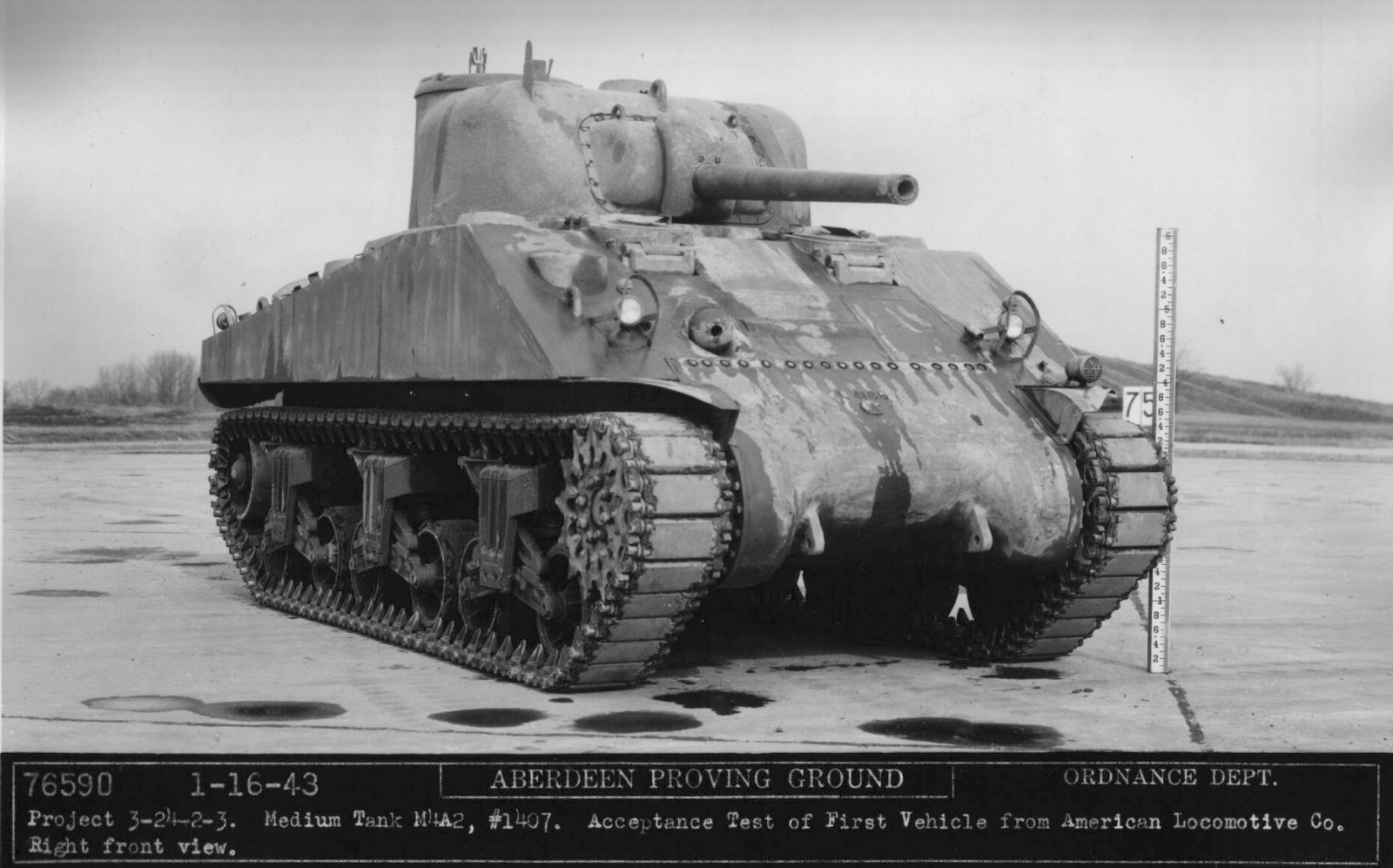
Sherman tanks with the 75mm gun carried between 104 and 97 rounds of main gun ammo. Only 10 to 15% of this ammo was AP, that’s how rare other armor was, HE would make up the majority of the rest of the load, with maybe another 10 to 15% being WP smoke, since this was also a somewhat destructive shell, because it caused fires and WP when it landed on a person was hard to put out. There was also a canister shell, but I think it was only used in the PTO. The rate of fire on the gun is a little misleading, since depending on the Sherman, you would have between 6 and 12 ready rounds, more on the very early Shermans with ready rounds around the base of the turret basket. Once the ready rounds were fired, and often, the ready rounds are kept in reserve anyway, to deal with unexpected threats. Wet Shermans had an armored 6 round ready box mounted in the turret, the rest of the ammo was in armored boxes under the floor. Most wet tanks had a half turret basket or none at all. This was a problem common on pretty much all tanks.
The M3 75mm gun was so well-liked, the British essentially ended up converting many of the QF 6 pounders to fire the same round, fired with basically the same ballistics, with the advantage of not needing to modify the current tanks mount. The WF 6 pounder was a better AT gun, but, its HE round was not very good. The M48 HE round used by the m3 75mm had 1.5 pounds of TNT inside, and since the Sherman could fire them fast, and the shell was fairly handy, it’s easy to see why the gun was good at infantry support. It really only lacked the ability to pen the frontal armor of the German Tiger and Panther, but those tanks were rare enough, or easy enough to get side shots on, the 75 did the job, and did it the whole war since the 76mm armed Shermans never totaled more than 53% of the Sherman force in Europe. The M3 75mm gets a lot of flak thrown at it by ignorant people who think it was a low-velocity gun that could not penetrate armor. These people must be confusing it with the German KwK 37 L/24 75mm gun that armed the first versions of the Panzer IV.
75mm M3 spec booklet MK VI Download.
The M1/M1A1/M1A2 76mm gun: Made by Oldsmobile, It Was Not a Great Gun, but Did the Job
The M1 series of 76 mm guns went into production before the US Army had any idea of German heavy tanks or the Panther. They were just looking ahead, to keep the Sherman as good a combat weapon as possible, and to stay ahead in the arms race. They had the 3-inch AT gun on hand and had used it in the M6 and M10, but it was really too bulky to work in a medium tank turret. The Army decided to design a gun with the same ballistics, but in a much lighter, and less bulky package, in doing so the M1 gun was born. The gun overhung the front of the Sherman a lot so the Army decided to shorten it over a foot. It still seemed to match the ballistics of the 3-inch AT gun though; guns with the shorter barrel were designated M1A1 guns. The first three hundred or so guns produced by Oldsmobile lacked muzzle brakes or the threads to install them. Gun’s produced after that had the threads and a protective cap over them so a brake could be installed later. The final variant of the gun was the M1A2, installed in late production 76mm Shermans, this gun always had the muzzle brake, but had a slightly different barrel, with a minor change to the rifling twist.
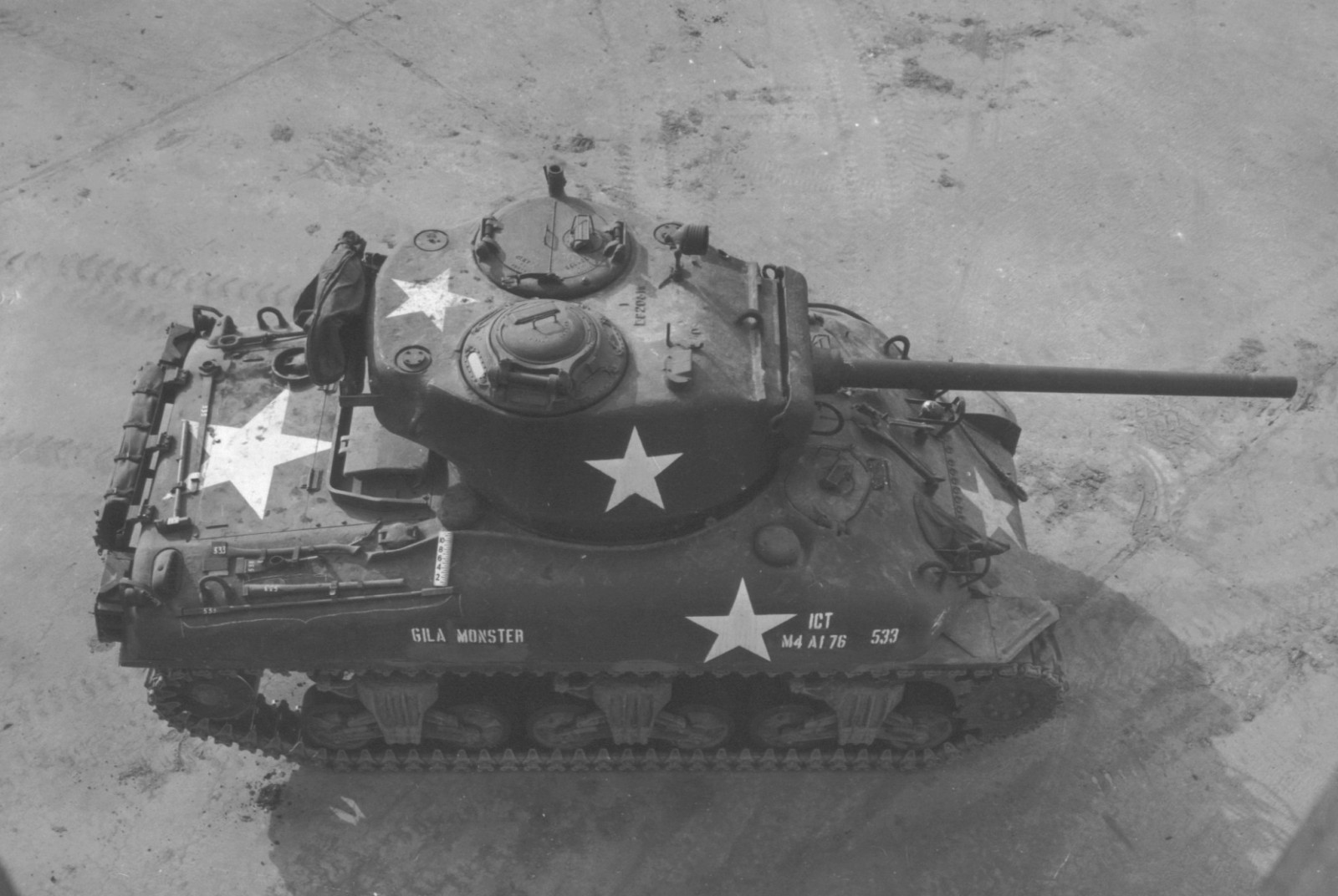
Much of the later large hatch hull tanks were produced with a larger turret to accommodate the M1 family of 76mm guns. This turret came on M4A1s, M4A2s, and M4A3 tanks. The M1A1 on the early tanks, like the M4A1 76 w tanks used in Operation Cobra, came without muzzle brakes. When firing during dusty -conditions the view of the target would be obscured by dust stirred up from the guns blast, the fix for this was for the commander or another crewman to stand away from the tank and talk to the crew over the intercom, via a long wire, and correct the shots onto the target. Not a great fix…The final fix was muzzle brakes; it took a little while for supply to catch up with demand but they were showing up on Shermans in Europe by late 44, and by March they seemed to be in stock and showing up on tanks that had the protective cap before.
Another problem was the gun was not a huge improvement over the M3 75mm as a tank killer, and was not as good as an HE thrower. As mentioned before, several tank divisions didn’t want the improved Shermans at first. The penetration problem would be partially solved with HVAP ammunition, but by the time it was common, German tanks to use it on were not. Post-war, ammunition would be further improved and there would be no shortage of HVAP ammo in Korea, so the US Army would soldier on with the gun, in its final improved form, the M1A2.
The M1 series of guns were also stabilized when installed in the Sherman, but it was the same system used with the 75mm gun, offering limited advantages. The Nazi Germans never fielded a stabilization system of any kind on their tanks. Tanks with the M1 and M1A1 guns carried 71 main gun rounds in wet storage racks under the floor, with an armored 6 round ready rack on the turret floor.
M1-M1A1-M1A2 guns 76.2mm Sherman Tank Gun PDF file.
The M3 90mm Gun: The Most Powerful AT Gun the US used During the War.
The US M3 90mm tank gun started out life as an AA gun, a very good AA gun, unlike the very overrated Flak 18/36/37. As the AA gun was developed, its mount gained the ability to be used against ground targets, with up to -10 degrees depression. The ballistic performance on the gun was good, but what really made the AA gun shine was the AA gun system that incorporated Radar, and proximity fuses, sci-fi tech to the Germans, but pretty typical American technology for the time, it was the best land-based AA gun system of the war. Contrary to some claims, it was pretty rare for US 90mm AA guns to be used in the direct fire role. The US Army was rarely desperate enough to have to resort to such tactics.
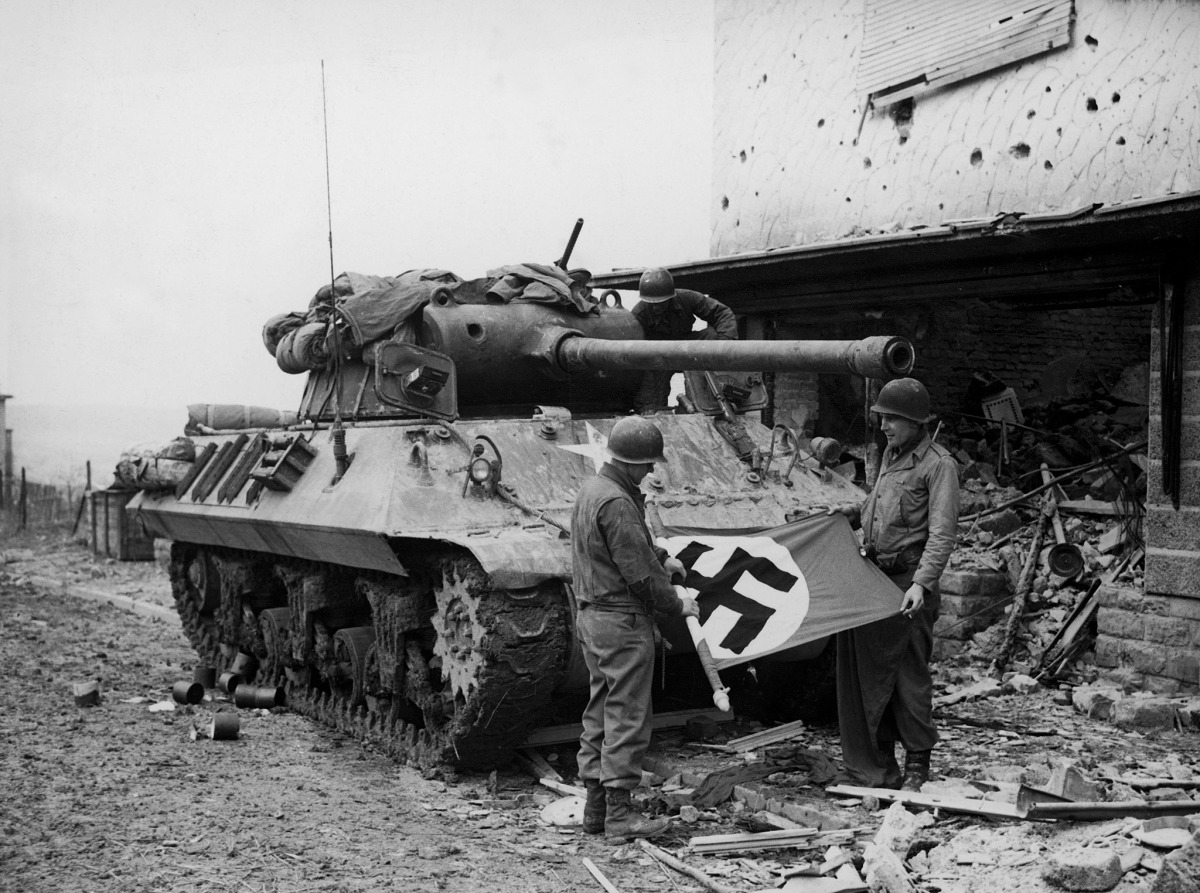
When the US Army started looking into a bigger AT gun than the 3-inch, the M1/M2 90mm AA gun was a natural choice. The tank-mounted weapon would be designated the M3, and with a barrel threaded for a muzzle brake, the M3A1. When tested against the British 17 pounder gun, the M3 had slightly inferior performance but was more accurate. The US Army preferred the 90mm over the 17-pounder for various reasons, the biggest being it didn’t have scary flashback out of the breach on firing, making it seem like a somewhat shoddy design. The 90mm M3 would soldier on the in the M26/46 tanks but would be replaced by improved 90mm guns on the M47 and M48.
As a dual-purpose tank gun, the M3 90mm was good. Its rounds were not too big for one man to handle. It had good AT performance and a more potent HE round than the M3 75mm gun. When installed on the M36 Tank Destroyer, it was able to deal with the rare heavily armored German threat, if the regular Shermans hadn’t already killed it by the time the M36 got there. Since the gun was not overly hot, it didn’t wear barrels out fast, so it could still be used in an artillery role.
M3 90mm gun data on PDF
The 3-Inch AT gun: An Old AA Gun Finds a New Use
The 3inch AT gun started out life as a AA gun. It was still being used as one for the first half of the war. It was a natural choice as an AT gun since it was being replaced by the M1/2/3 90mm AA gun system. The gun was large, heavy, and bulky, and the M10 tank destroyer’s turret had to be rather large to fit it. They were also able to fit it in the T1/M6 Heavy tank, but it was clear it needed a redesign to fit in a smaller turret like the regular Sherman. This ultimately leads to the M1A1 gun discussed above.
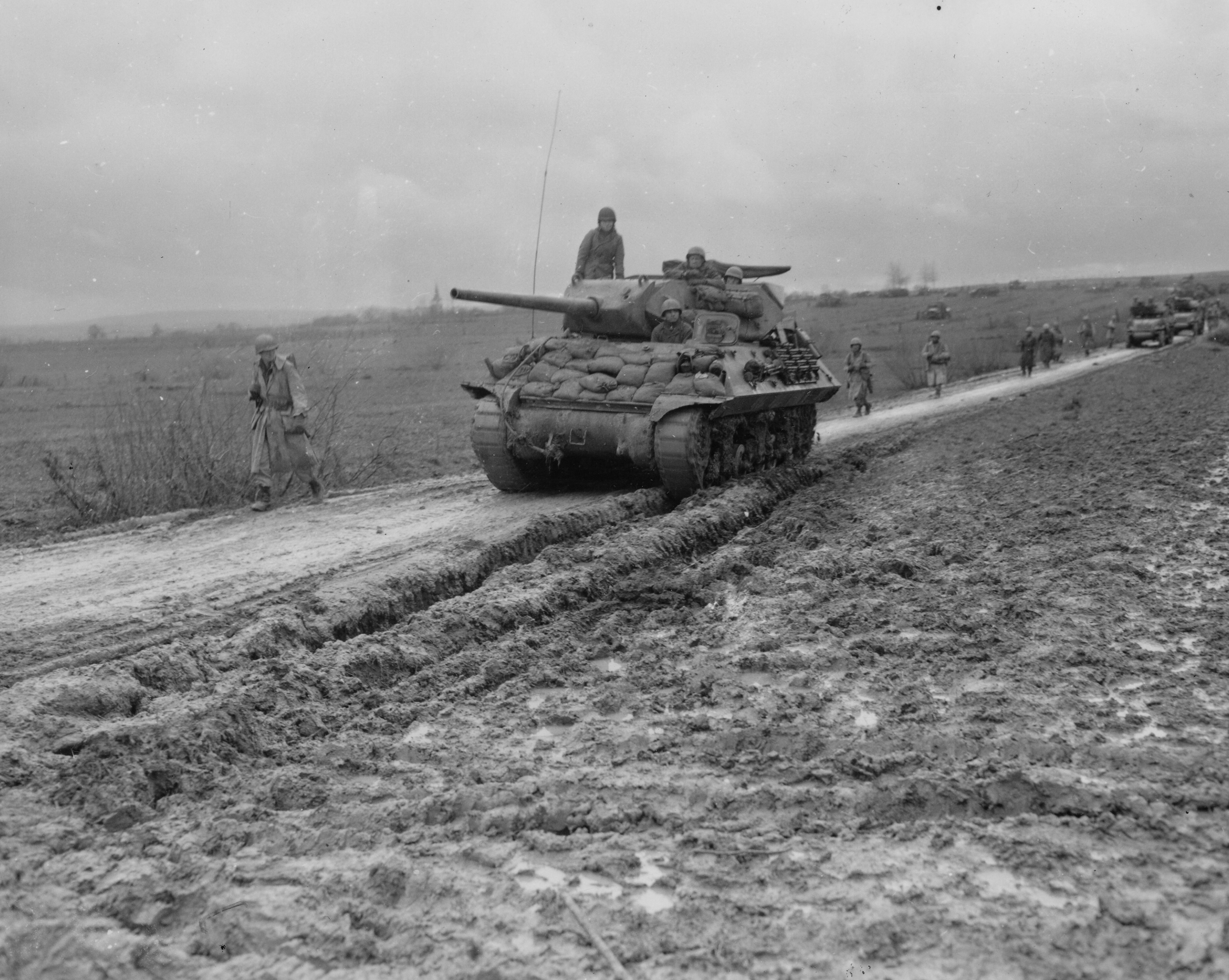
There was also a towed AT gun version of this weapon, it was generally not well-liked. It was too big to move around easily by hand, hard to hide, and didn’t have great pen to work well as a fixed gun. At one point in the war, nearly half the Tank Destroyer Battalions were towed and equipped only with the towed guns and trucks to move them. These TD battalions had little luck, and some really got clobbered in the Battle of the bulge.
Ultimately this gun use was more about taking unused guns on hand and getting a decent AT weapon out the door fast, by using them for this new purpose. They were not perfect, and as towed weapons, even really good, but on a mobile platform like the M10 or even the M6 heavy tank they did the job well enough.
3 inch M7 Gun spec sheet PDF download
The M2/M4 105mm Howitzer: Artillery in a Sherman Package
The US 105mm M2/M4 howitzer was the biggest gun installed in the Sherman, the versions of the Sherman with this gun were developed to replace the M7 Priest, but never fully did so during WWII. They were used in the same role, or in limited direct support roles. These tanks did not have a stabilized gun or wet ammo racks but did have a large hatch hull. All 105 Sherman tanks, either M4 (105)s or M4A3 (105)s were produced exclusively by Chrysler. 105 tanks carried 66 rounds of main gun ammo, in dry ammo racks.
Sherman tanks equipped with the 105 often found themselves pooled with the others from the three companies of a battalion, with the two from the battalion HQ, so the Tank Battalion could have their own mini 105 battery on call. When working with their assigned company, they were often held in the back and supported the gun tank platoons with indirect or direct fire.
The 17 pounder gun: 76.2mm of British High-Velocity Boom Boom
The 17-pounder was developed to replace the 6-pounder, it was clear the 57mm 6-pounder wasn’t going to be able to handle tanks with thicker armor, but it stayed surprisingly relevant late into the war. The 17-pounder started development in the final months of 1940 and was going into prototype testing in late 1941. The first few AT guns were made by slapping the gun onto the 25 pounder carriage called the 17/25 pounder, and some were shipped to North Africa, to counter the supposed Tiger threat. The full production QF 17 pounder AT gun was available by the Italian Campaign.
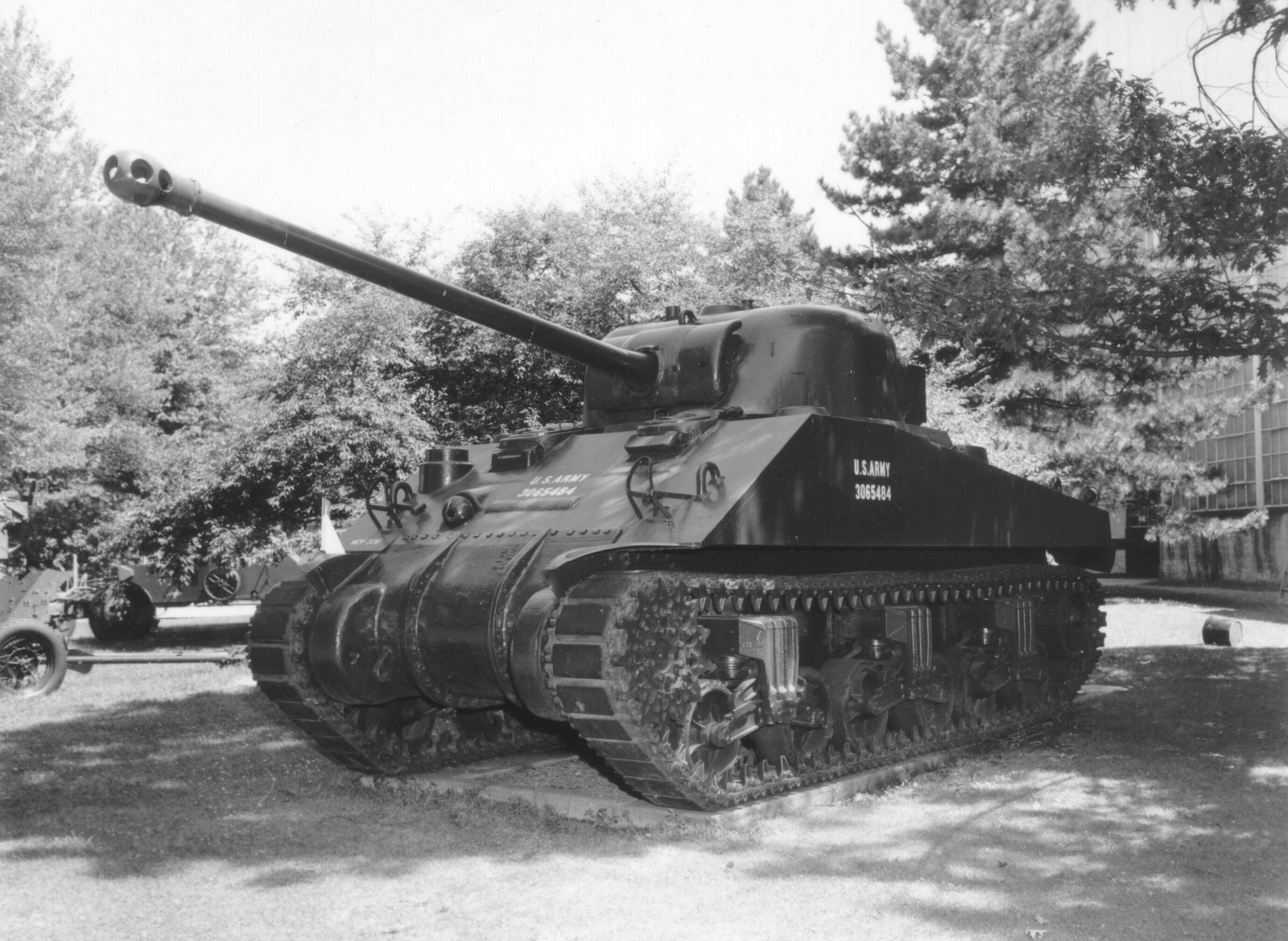
The main reason the gun was a better AT gun than the US M1A1 gun was the round had a lot more propellant behind the projectile and then the Brits came up with the super velocity discarding sabot round. This new round had very good penetration but had some serious accuracy problems. The accuracy problems with the SVDS ammo were not fully solved until after the war. The gun was intended for tank use, but the British Tanks meant for it had too many developmental problems, and were not going to be ready by Normandy landings, so the Sherman Firefly was born. See its own section for more info on these Shermans.
M4A1 with 76 gun
M4 105
What’s left of an M4A3 75w on Iwo Jima
M36 with M3 90
Sources: Armored Thunderbolt by Zaloga, Sherman by Hunnicutt, Combat Lessons, Archive Awareness, WWII Armor, Ballistics and Gunnery by Bird and Livingston, TM9-374 90mm Gun M3
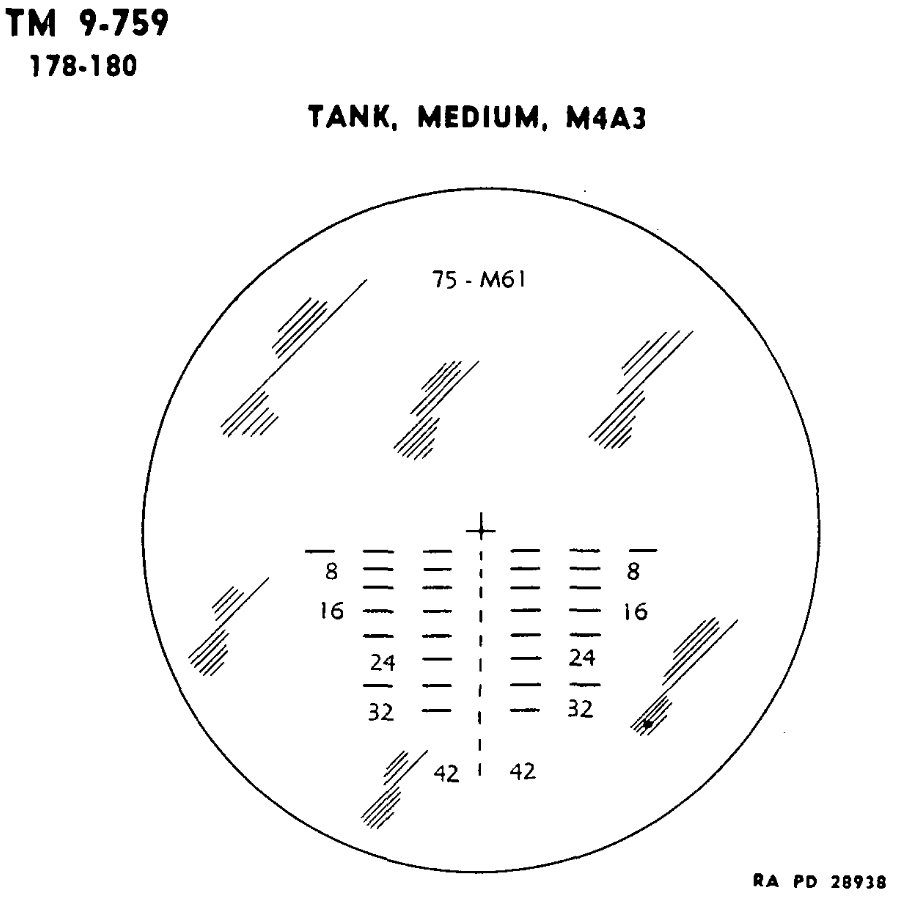
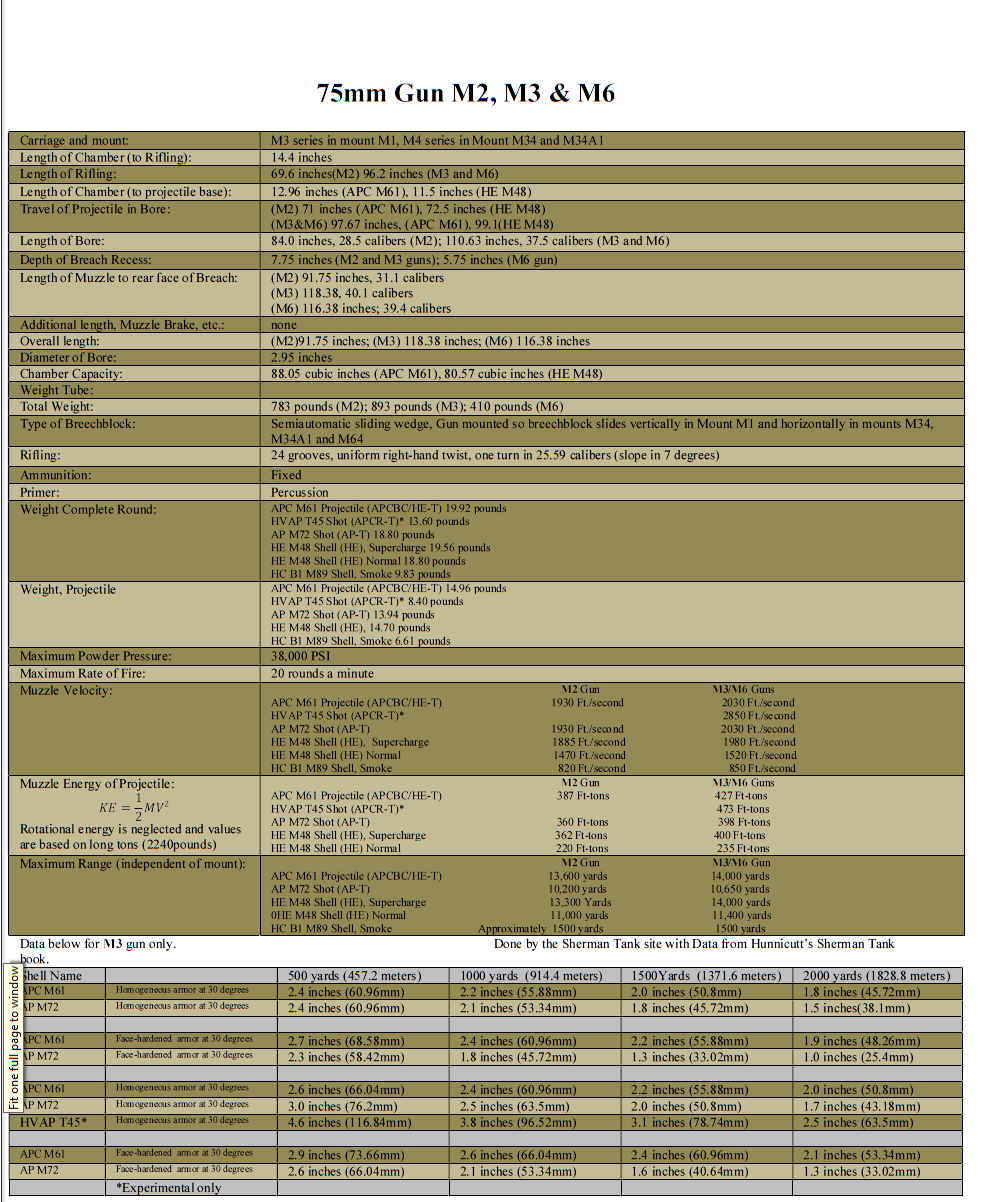
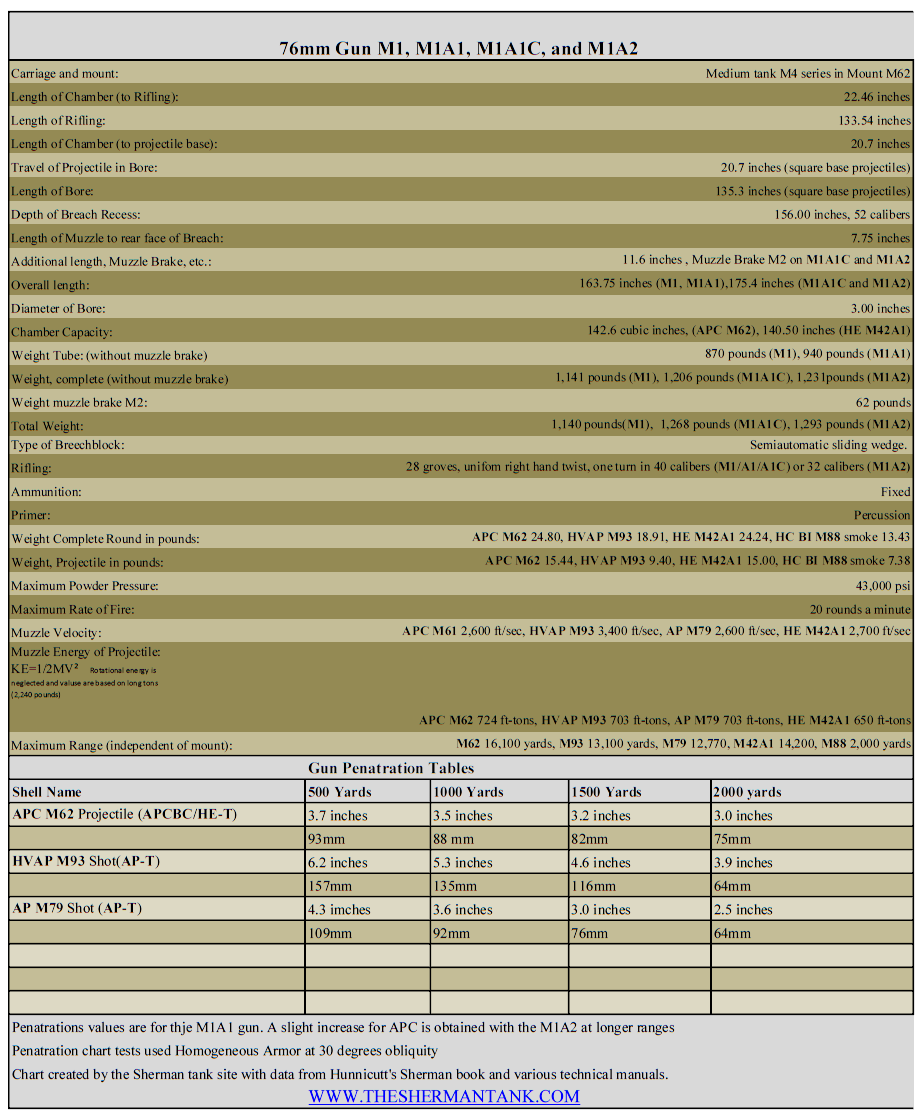
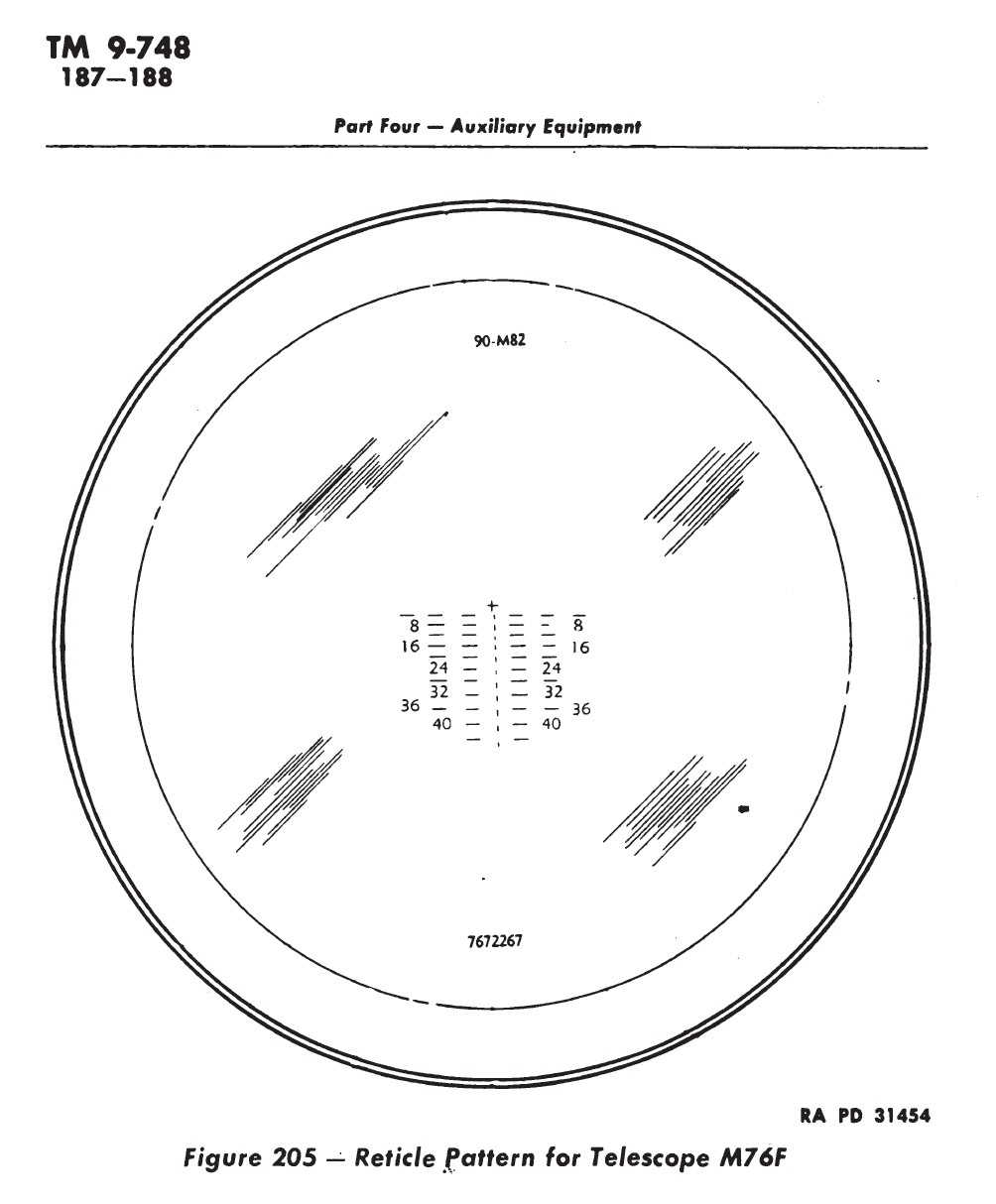
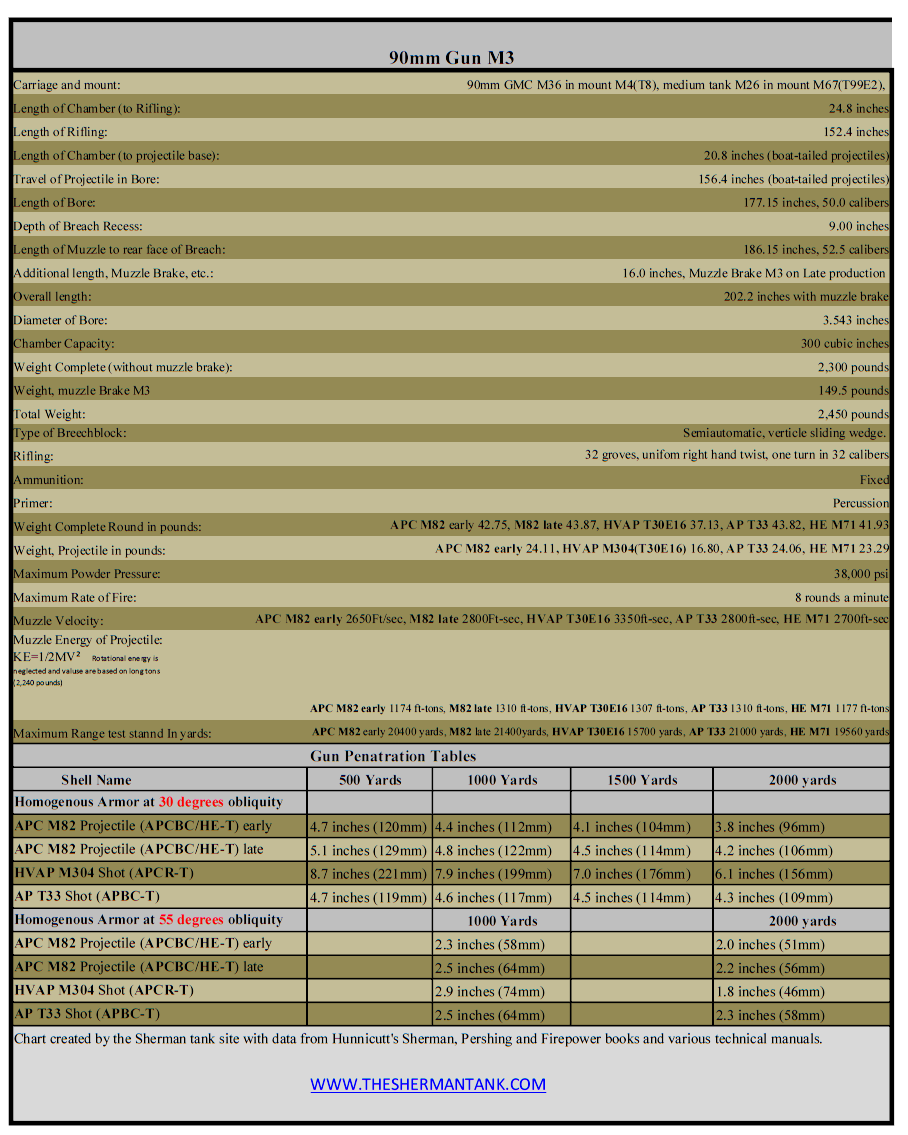
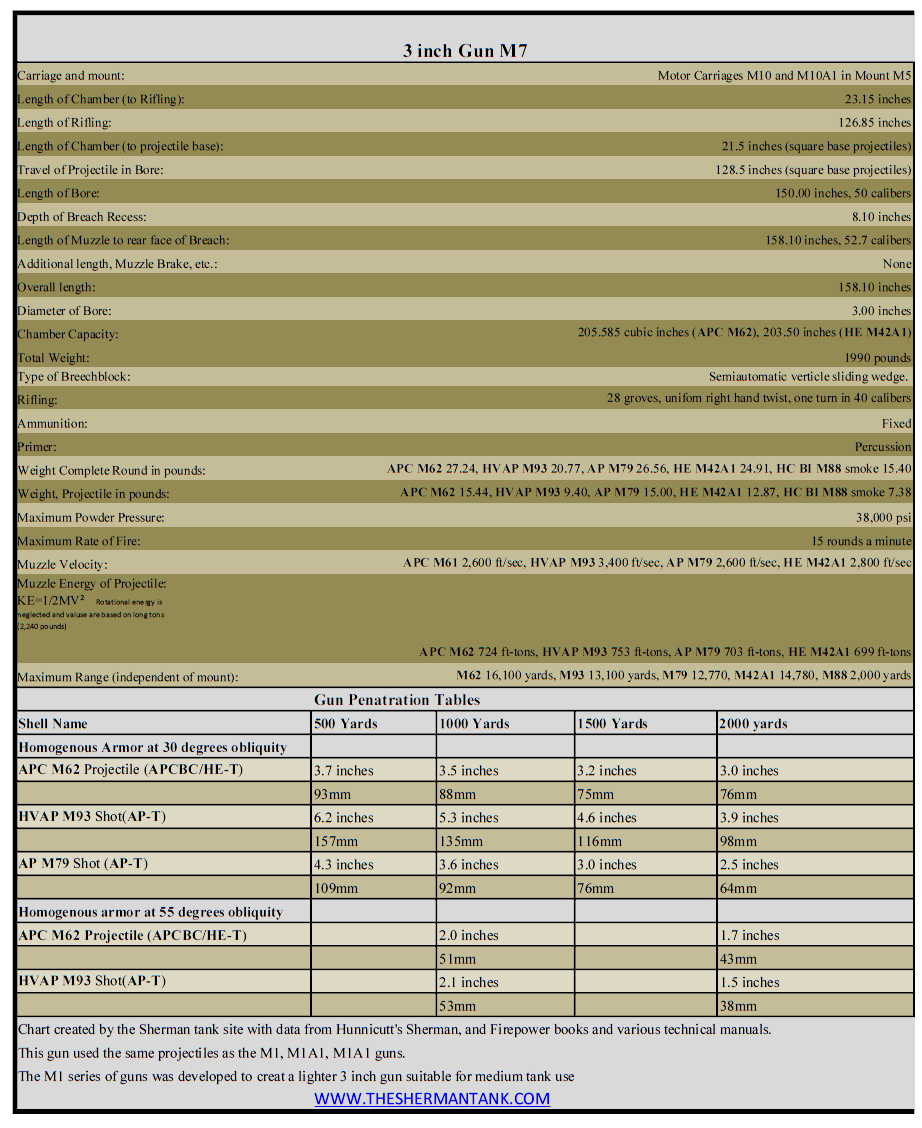


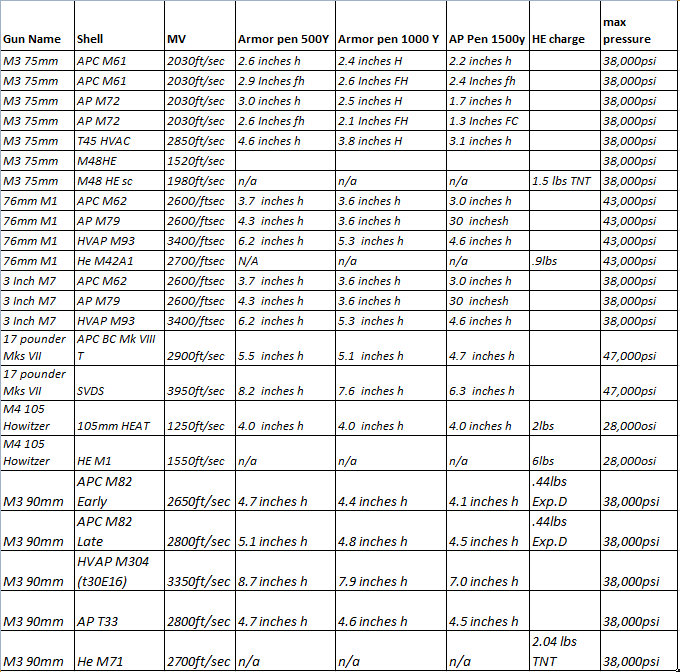
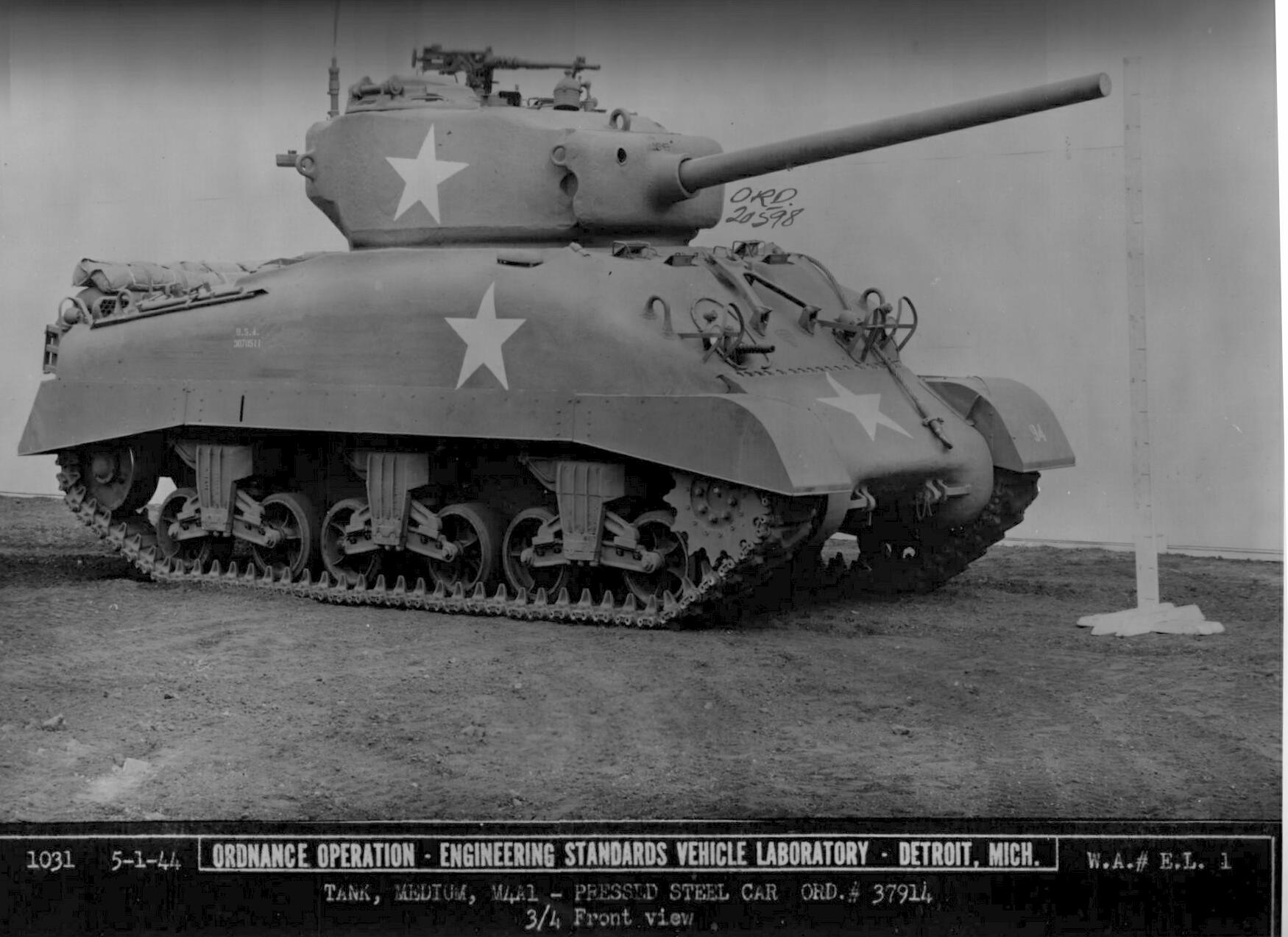

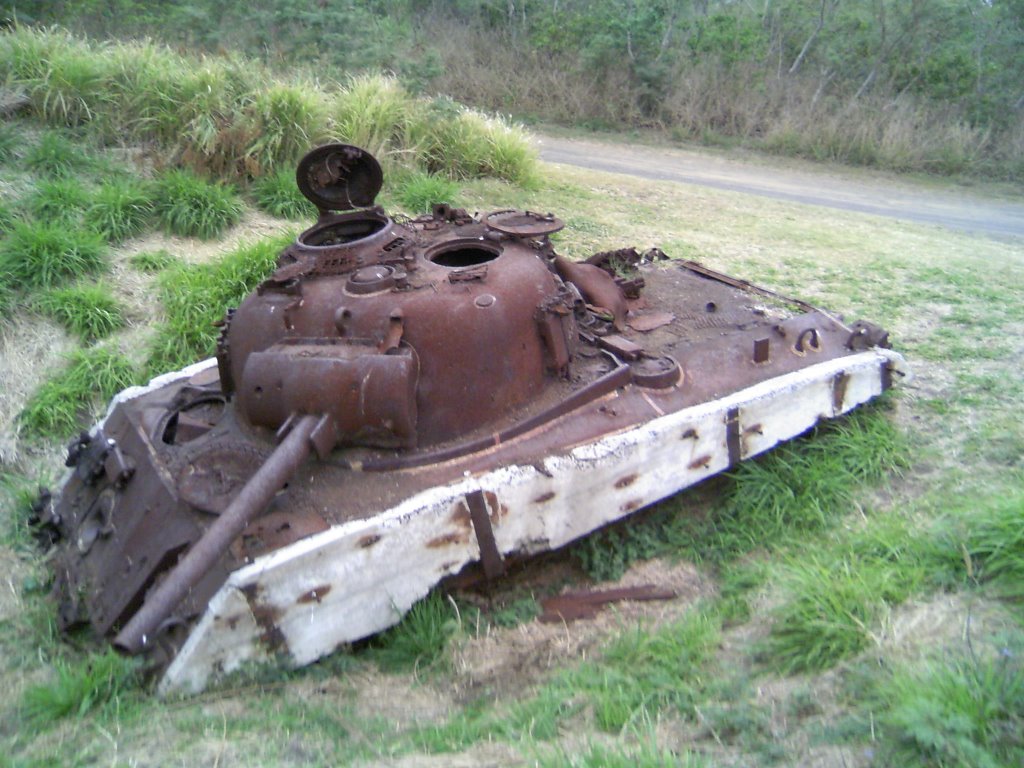
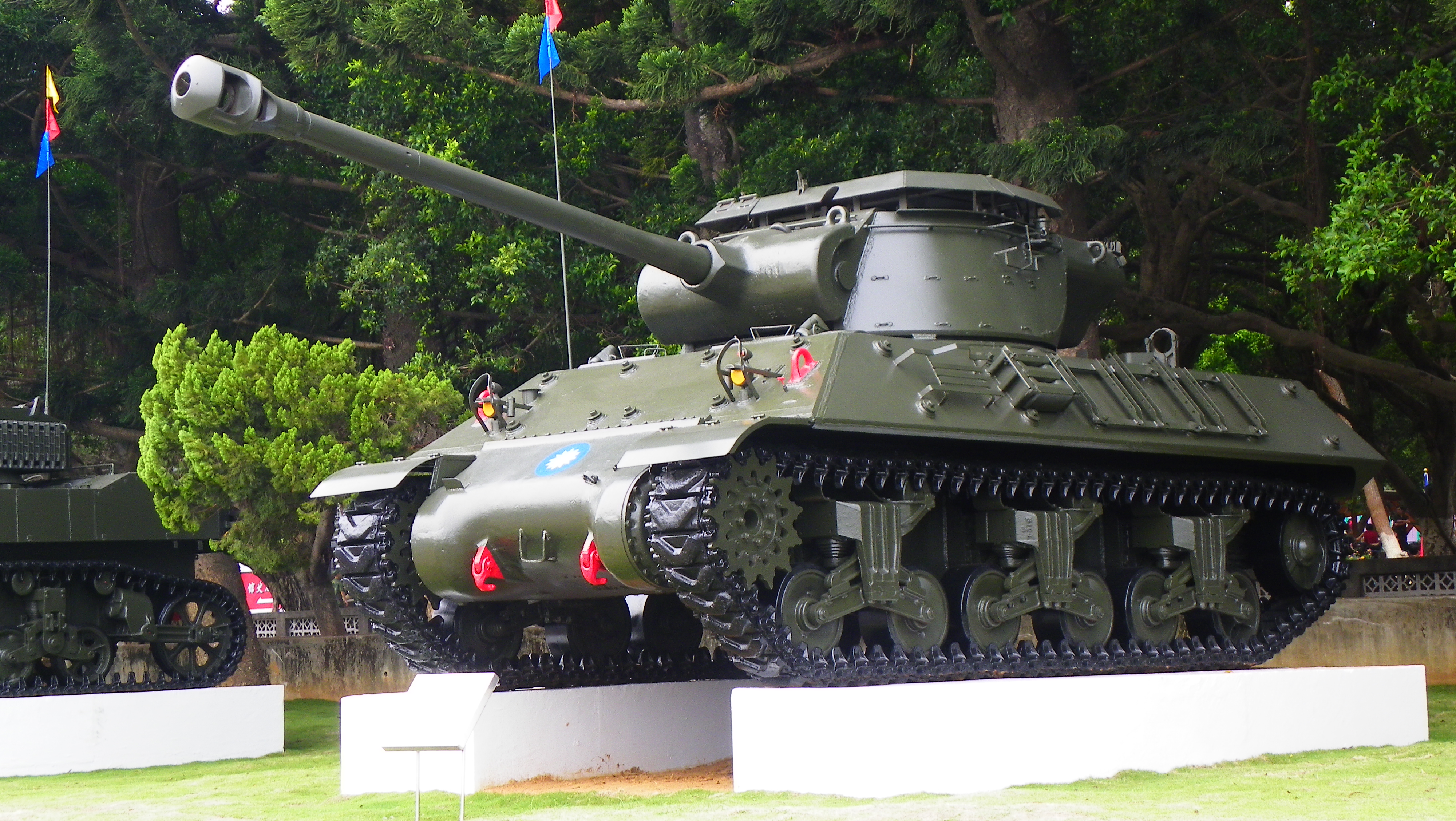
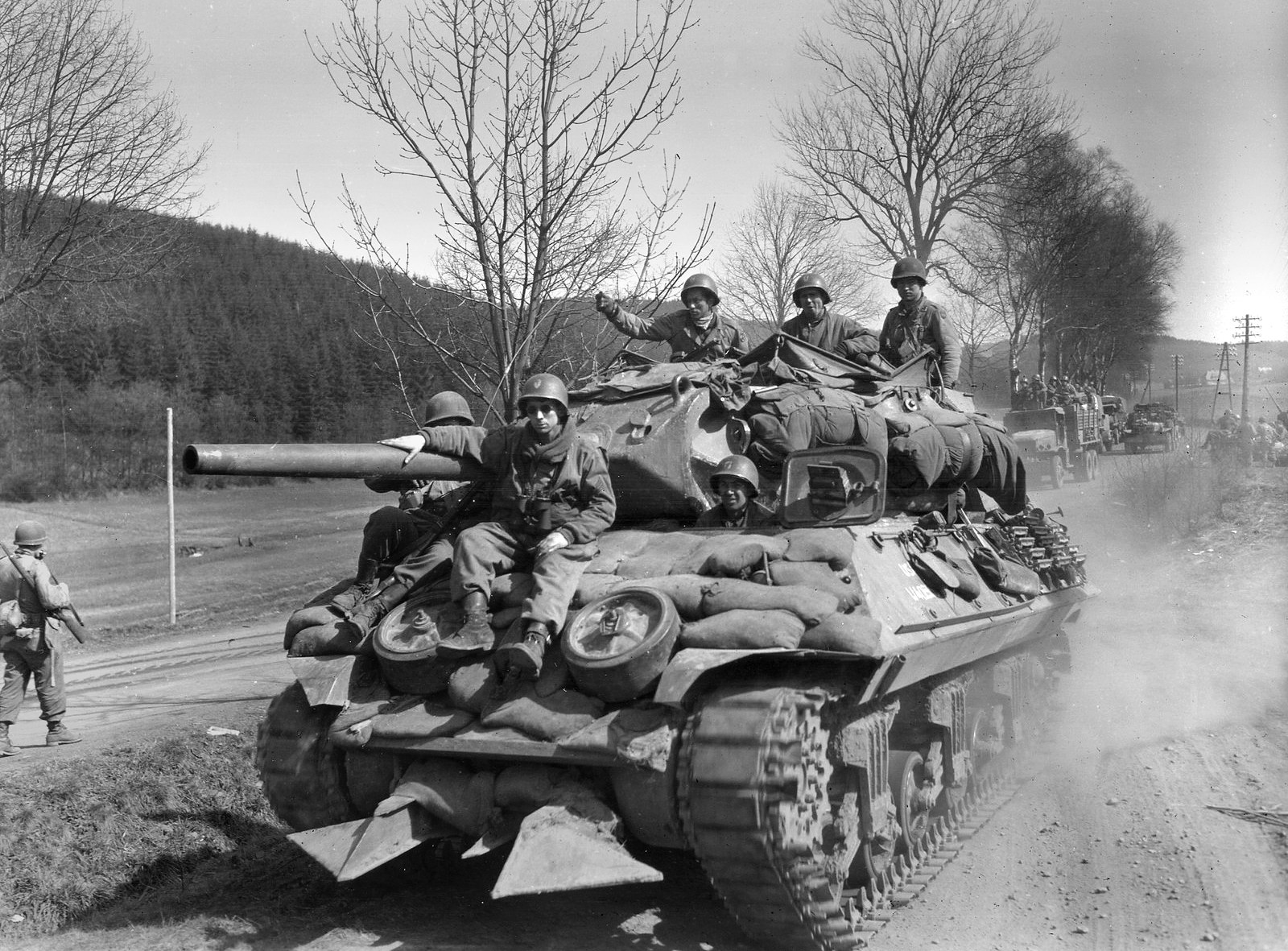
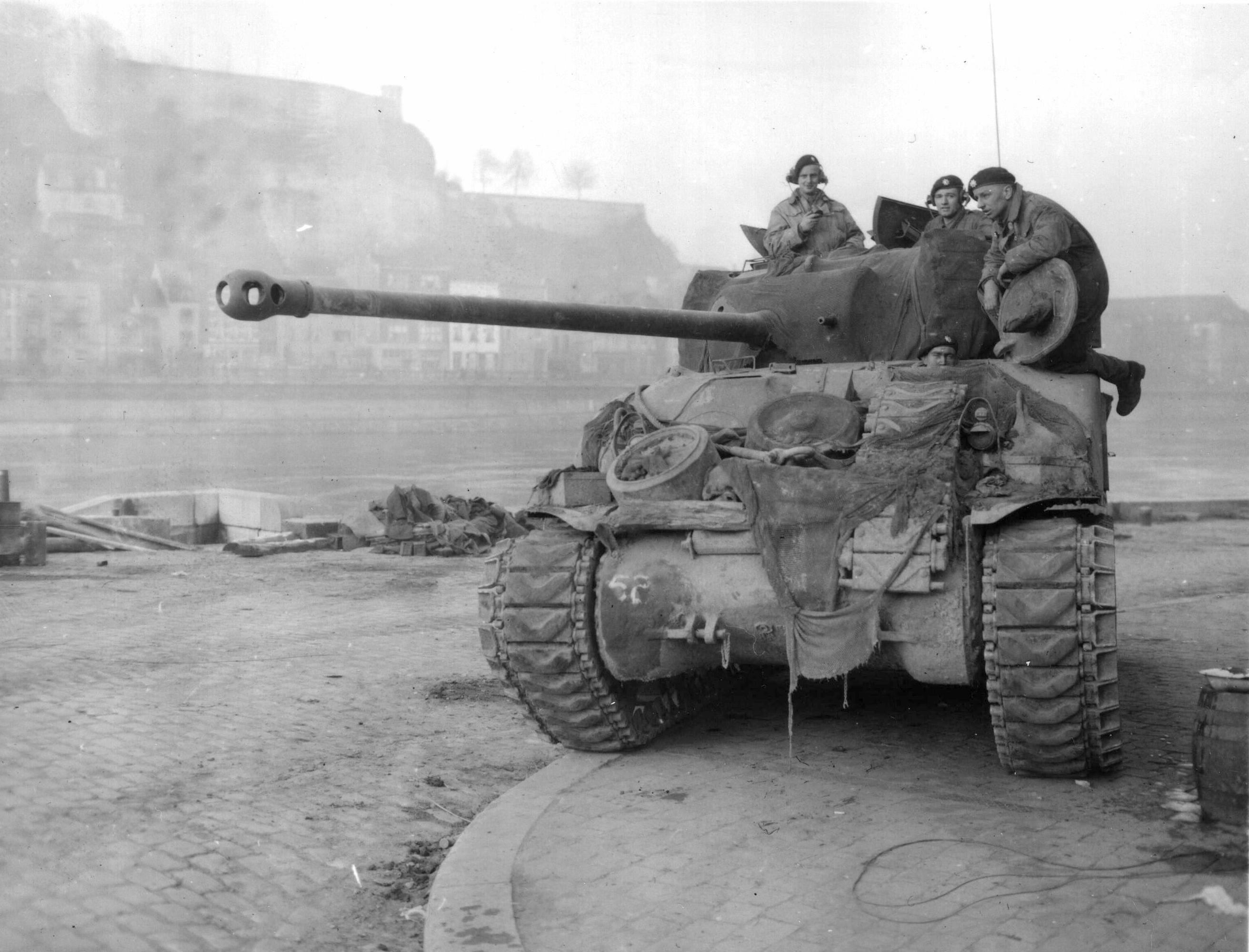
Hello.
I am working on an Israeli M10, the photographs I located look like a mid-production, with what appears to be a French CN-75 50. The vehicle has the additional stand-off armour mounts on the sides of the hull. (Not the Achilles Mk IIc, which I understand has the armour bosses on the front of the hull only, not on the sides. Please correct me if I have misinterpreted this feature.)
This M10 also appears to have the duckbill counterweight, and notably there is no spare track links; fuel can mounts or other stowage points.
Could it be some sort of hybrid?
See: https://ritastatusreportdotlive.files.wordpress.com/2016/03/elticpk.jpg
I have not been able to find an illustration of the working end of the French gun, the breech and so on. As the M10 is open turret this is essential.
While there are numerous CN/35 CN-75 50 barrels, I have not found an aftermarket for the whole gun. Nor have I found an artillery version of the CN-75 50 as there is for example the 17 pdr and other weapons also mounted in AFVs.
Many hours of searching later……….
Can anyone direct me to an illustration (or even better a 1/35 kit) of the complete French CN-75 50 as mounted in the M51 and other Israeli Shermans?
This would be much appreciated.
Hello sir. First I want to say you thank you for this site. A lot of information, and a lot of truth about sherman. Sure german tanks had better firepower and front armor, but that’s all, all people thinking not, should read your site, or find good books on it.
So I’m here about the 76mm gun. Maybe is there a little error. In the book “Sherman:A history of the american medium tank” by R.P. Hunnicutt, the author saying that the M1 is the result of the T1 gun cut off about 15 inches. The M1A1 is the M1 gun with recoiled surface lenghtened by 12 inches. And M1A1C is the M1A1 with a thread to fix a muzzle break.
Maybe author is wrong, i’m waiting to receive the zaloga’s book
Unfortunately, the 76mm M1A1 did not meet field expectations, and could not penetrate the Mk V frontal armor at any range, and could not penetrate the Mk IV H at more than 50 yds range either. If the Army Ordnance had left the barrel at the original length (instead of lopping of 15 inches), the results would have been much better. This is analyzed in detail by a 2018 Army study ARMET-TR-17002 (76mm Gun M1A1: Analysis of US Anti-Tank Capabilities during WW II). The study used various analysis tools to evaluate the effects of muzzle velocity and range on penetration of Mk IV and Mk V tanks.
“Ramping the M93 HVAP-T muzzle velocity up to 3800 fps to account for the lost cannon length yields some interesting results. The front hull of the Pz IV H would be vulnerable out to 832 yd, covering the full range of tank engagements in the ETO. The Panther is vulnerable at 249 yd, which is improved from the point blank failure. The Hellcat or Sherman armed with the unaltered 76-mm gun would have had a much better chance of defeating the front hull armor of the Panther. Cutting the muzzle length to save weight while reducing velocity on the muzzle exit was a costly mistake that hampered the Tank Destroyer’s primary mission, which was destroying German Panzers.”
This is a terrific site and I enjoy it immensely. Occasionally I leave questions or comments. After about a week online they’re taken down, whether anyone has answered them or not. Meanwhile other people’s questions/comments, that were already posted when I submitted mine, stay up indefinitely. Why is that?
By the way, did you ever figure out what AFVs Hemingway was describing in that Siegfried Line piece? He was accompanying the 22nd Infantry Regiment of the Fourth Infantry Division. Here’s the link again: http://billdownscbs.blogspot.com/2015/02/1944-war-in-siegfried-line-by-ernest.html
Bill
Thanks for the compliments, I try and keep everyone’s comments, but I did have a few lost due to operator error and fat fingers, I’m really sorry if I deleted yours.
I agree with you, it sounds like 105 Shermans, maybe he was hanging out with the Battalion HQ 105 tanks?
No criticism intended.
IMO, Hemingway’s final line is what needs to be said to the Wehraboos who haunt so many WW2 history sites:
“Sometimes, observing such sad sights and such elaborate preparations gone wrong, I have a feeling that it really would have been better for Germany not to have started this war in the first place.”
That’s a very interesting quote, the bad thing about Wehraboos is, they never seem to learn no mater what facts are presented!
J-G-T,
I figured some might get some facts &
needful learnin’ about the gun/armour
contest.. ..from this link, below..
http://www.wwiiequipment.com/pencalc/
“…. it was clear the 57mm 6 pounder wasn’t going to be able to handle tanks with thicker armor”
Correct – but, the 57mm was better than the 75mm in this respect. The 75mm was a better dual-purpose tank gun, but the 57mm was better at antitank work.